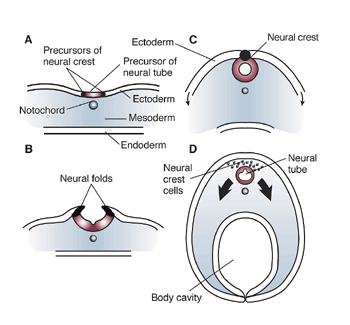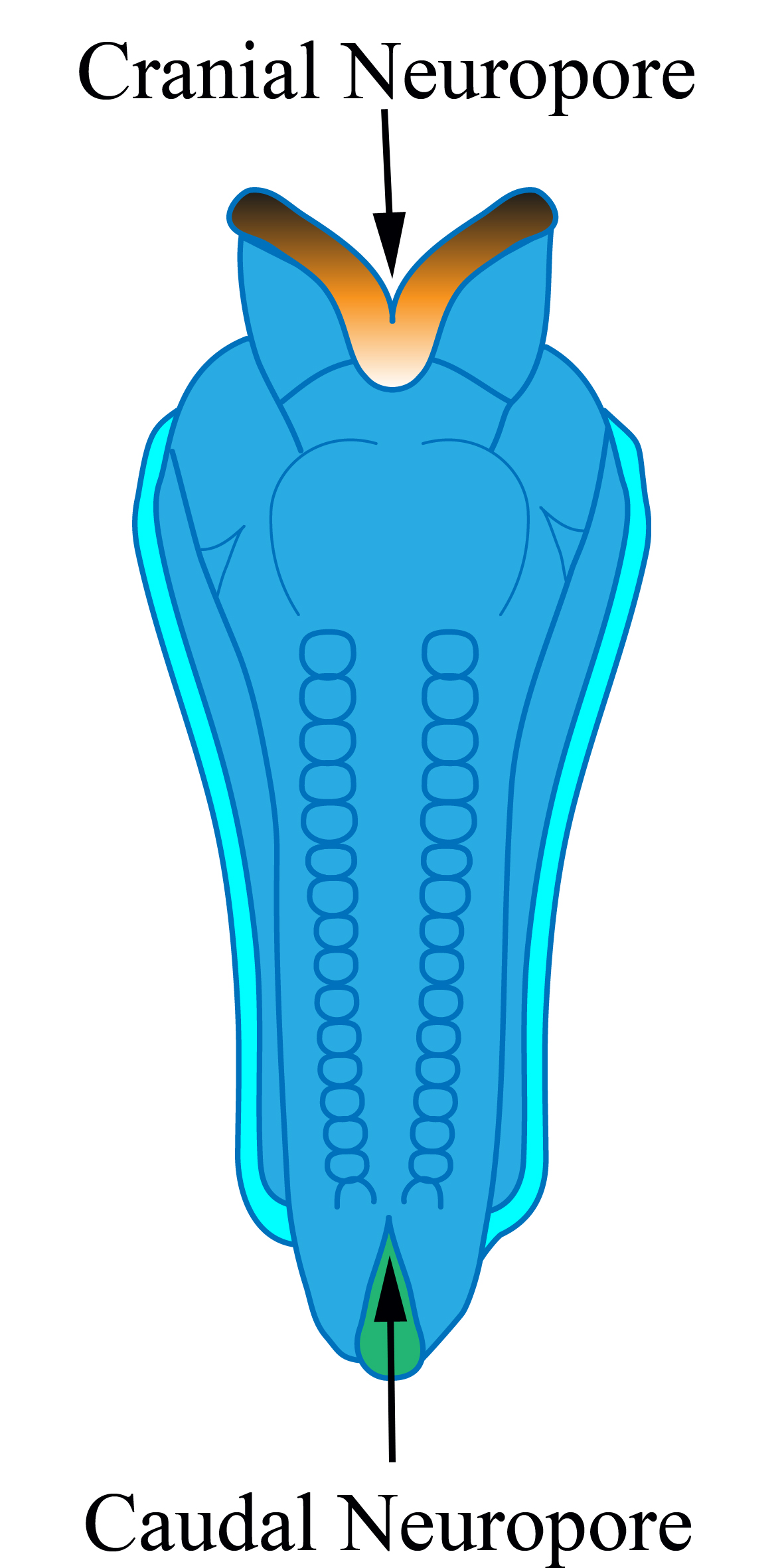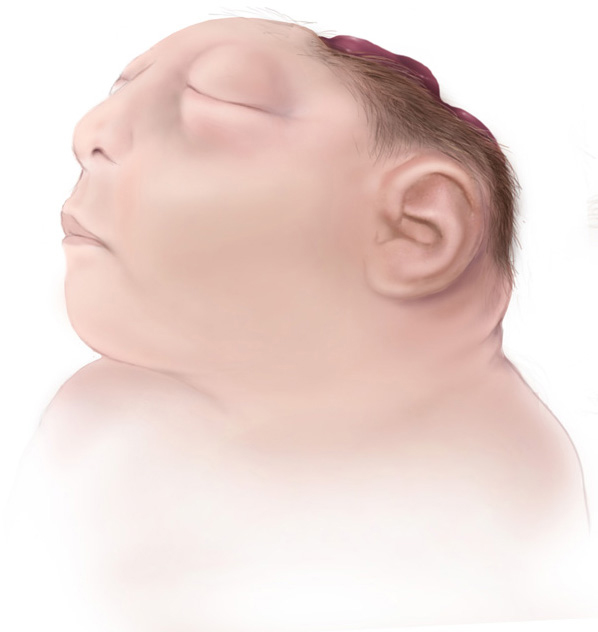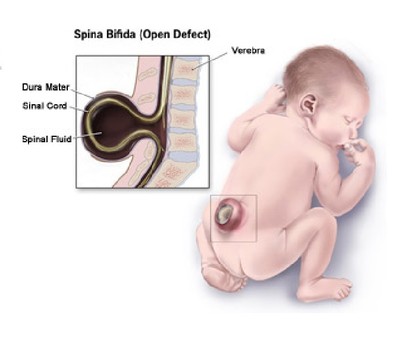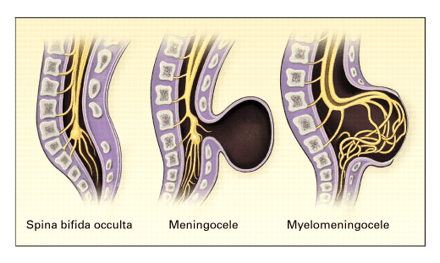The Neural Tube
|
In the earliest stages of development the embryo consists of a ball of cells, within which three layers can be easily identified.
The earliest sign of the nervous system is the development of the neural plate on the dorsal surface of the ectoderm, behind a column of cells known as the Notochord. The notochord is present in all vertebrates and is essential for inducing the development of the neural plate. At the lateral edges of the neural plate, ridges appear that grow and fold towards each other to form a tube, the neural tube. The cells that lead this development are called Neural crest cells (C), and when they have completed their role in forming the neural tube, they go on to form some more specialised parts of the nervous system including the dorsal root ganglia, the autonomic nervous system and the adrenal medulla (D). Thus the Neural tube is formed from the primitive Ectoderm of the embryo, and its formation depends on the presence of the notochord; the notochord is also important in the development of primitive nerve cells in the ventral half of the neural tube into motoneurones. The neural crest is important in ensuring the closure of the neural tube, and this process can go wrong leading the Neural Tube Defects. |
|
|
As the neural tube is forming, the central region closes first, and for a short time, the neural tube is open both at both ends, and the openings are called neuropores, these close completely around 28 days in the human. The diagram shows the cranial and caudal neuropores before closure of the neural tube. Once closed, the neural tube becomes segmented, and each segment is called a somite. After closure, the cranial end of the neural tube develops into primitive brain which can be divided into four distinct regions: Anencephaly occurs when the cranial neuropore does not form a complete tube, and the rostral developments of the nervous system fail to occur - so the bably is born without a brain. Spina bifida occurs when the caudal neuropore fails to close completely. |
|
The cranial end of the neural tube develops into massive structures in the adult human:
The spinal cord is segmented with 8 cervical, 12 thoracic, 5 lumbar and 5 sacral segments in humans. When the caudal neuropore fails to close, the deficiency is usually inthing the lumbo-sacral segments of the spinal cord. |
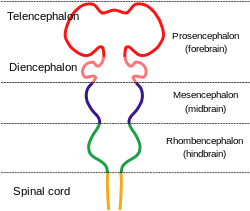 |
